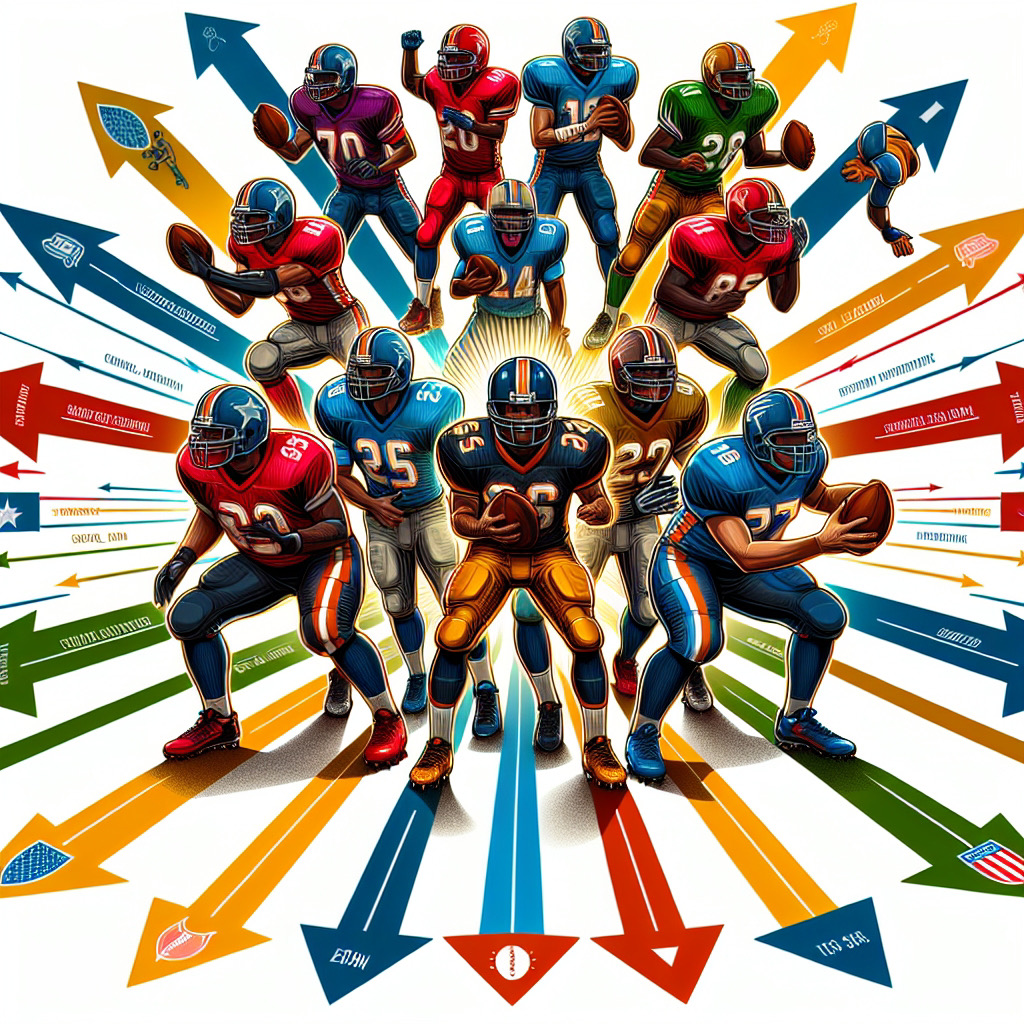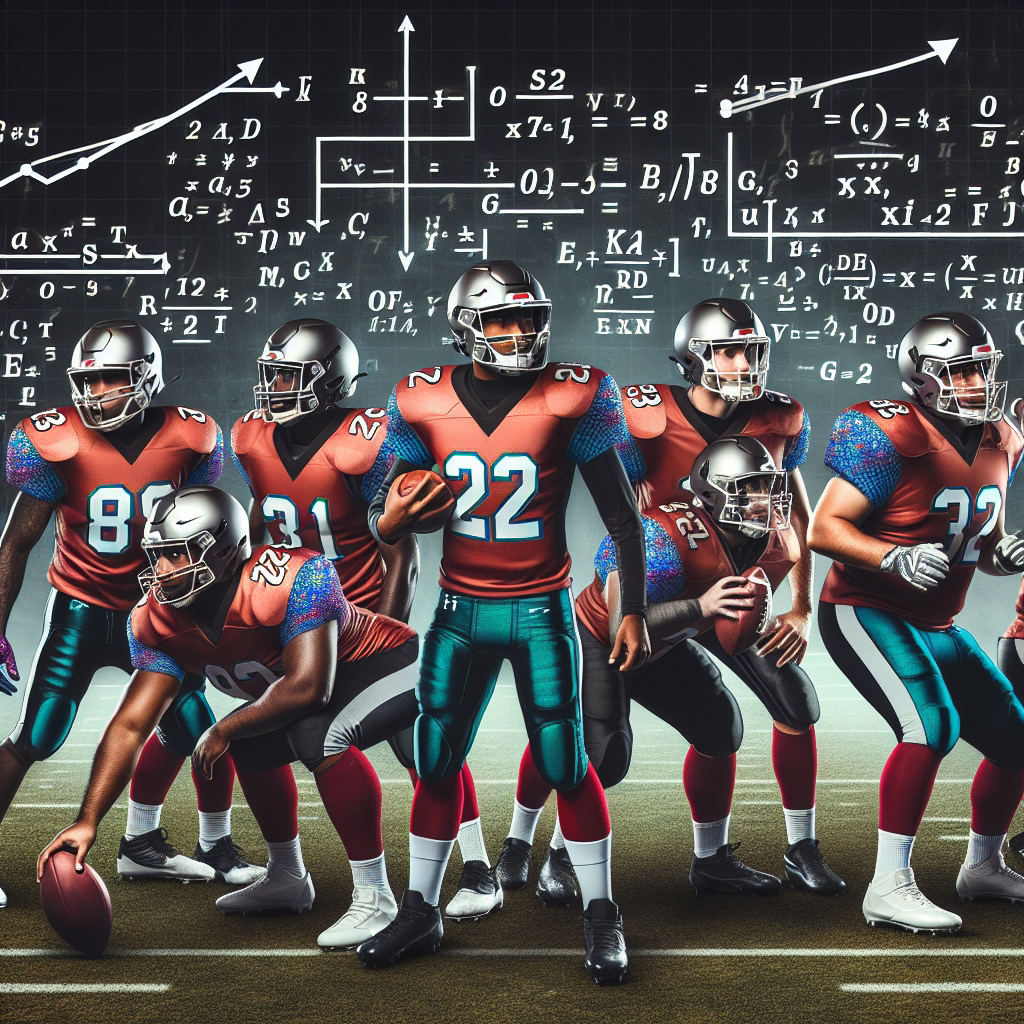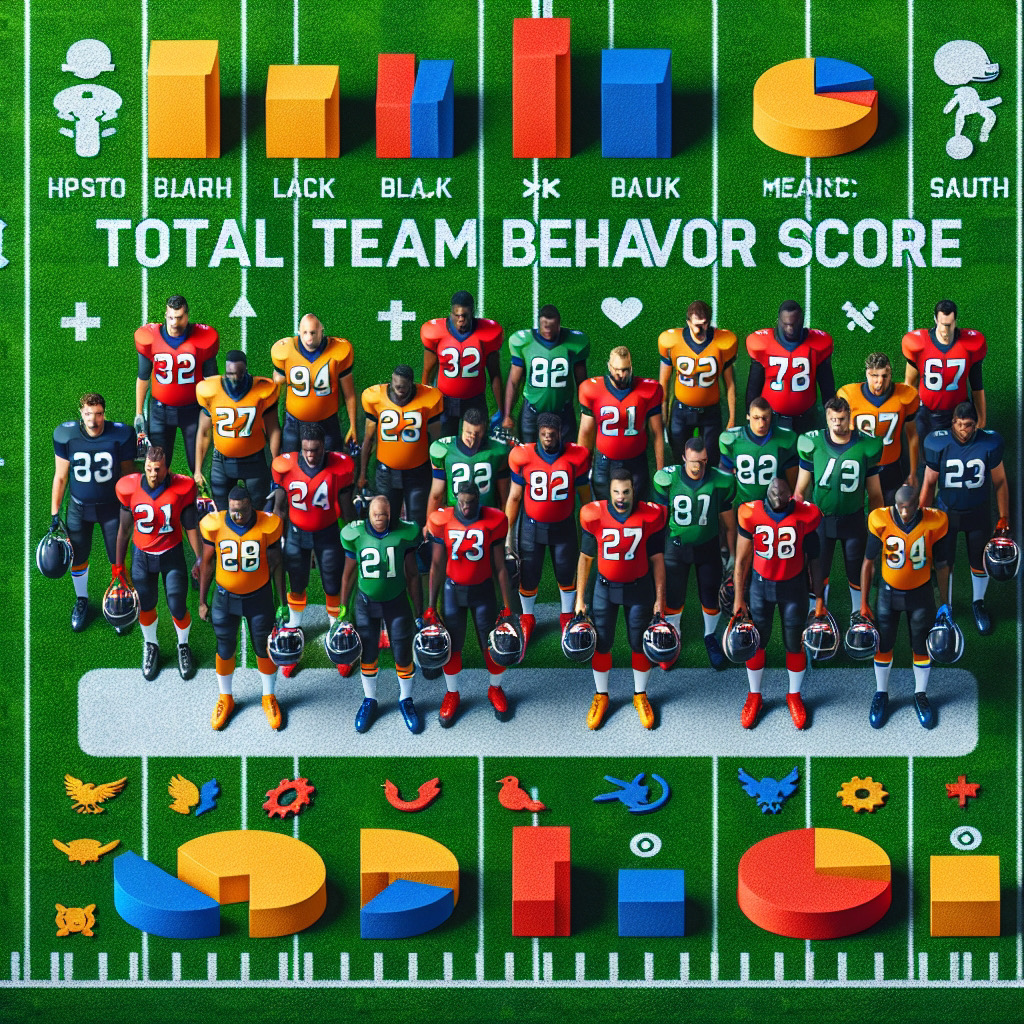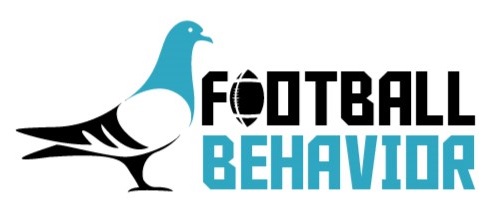Football Behavior NFL Analytics
Total Team Behavior ScoreIf You’re Short On Time…
- Objective NFL Analytics For Total Team Performance
- Better Than Averages or Standardization Metrics
- Predictive
- A Different Kind Of Analytcis: The Three Laws of Football Behavior
NFL Analytics: Total Team Behavior Score Defined

Total Team Behavior Score is an objective measurement that captures the behavior and performance of an entire NFL team.
Too often in NFL analytics and media narratives, there is an over reliance on averages and attempts at standardizing the NFL into a singular universe.
Doing this leads to what we call explanatory fictions, or, narratives that are faulty in their logic but are connected through coincidental correlation vs. actual causation.
For example, looking at Team A’s points per game late in the season and using that to assume that Team A’s offense is very strong and capable of “scoring from anwyeher at anytime”. Same as looking at their EPA per play.
This leads to faulty logic that Total Team Behavior Score clears up.
Total Team Behavior Score: Finding The Reality of Team Performance
There are currently three major pitfalls in the way traditional and current NFL analytics are utilized, and they lead to damaging explanatory fictions. This is due to a heavy reliance on historical and contemporary averages, and treating the NFL like a singular universe or environment that can be standardized:
Relying heavily on historical data without adequately accounting for week to week or year to year changes in team composition or strategy could lead to “explanatory fictions,” where the rationale provided by the data does not accurately reflect the current situation.
Football games and entire seasons are influenced by myriad factors including weather conditions, player injuries, team strategies, and even rule changes over time. Averages that span several seasons may not accurately reflect the current state of the game or the specific circumstances of a particular matchup.
One of the fundamental questions we ask when we watch a game or examine a season’s worth of production is “why?”. Why did the coach make this decision? Why was this the gameplay? Why did this player differently? Why is production down? Why are they not meeting my expectations?
To answer “why”, we can’t rely on metrics that rely on data from a period of time that have zero impact on the behavior we are examining.
Total Team Behavior Score uses zero data from anything but the current season. Environment has the largest control over our behavior. Environments in the NFL change internally every single season, and both internally and externally every single week, between lineup changes, game plans and opponents.
There is a place for historical performances, but if they occurred in radically different environments they have very little value, if at all, as to the present and the future. Take the following example:
Yes, it is true that the divorce rate in the United States are near 50%. But this is only important if the US was a homogenous environment. It obviously isn’t, and when we control for environment the averages are radically different. The divorce rate is multiples lower for two affluent, college educated adults than it is for two lower income, non-college educated adults. Comparing the two in one statistic makes zero sense and is not predictive of anything.
That is the way current NFL analytics are being utilized. And just like it is an explanatory fiction when people believe that “all marriages are 50/50 to end in divorce” because they hear the national average, it is an explanatory fiction to hold players and teams to averages that treat them as uniform.
With Total Team Behavior Score, and all of our metrics, we treat each team as a unique environment, and the Football Behavior approach can better capture the specific strategies, player dynamics, and coaching philosophies that influence game outcomes, and allow us to add better context when comparing different teams.
This method is well-suited to adapting to the sport’s dynamic nature, allowing for more accurate predictions in a landscape where the relevance of historical data may diminish due to significant changes over time.
It emphasizes the importance of context, such as the impact of a star player’s performance, changes in team composition, or the introduction of new coaching schemes, which traditional models might not fully capture.
Total Team Behavior Score: How We Calculate It

It is a defining, and differentiating, trademark of ours to be completely objective in our metrics. We conduct and provide our measurements without making assumptions, like whether or not a throw was a “big time throw”, or by grading individual players when we don’t know what their coaches are asking them to do on any given play.
In our work with coaches and players we asked what are the three most important characteristics of success to them, beyond the obvious wins and losses. The answers were near unanimous: Scoring a lot of points while preventing points, improving throughout the season, and consistency.
The Total Team Behavior Score is made up of three objective metrics that cover all three areas, which combine to provide a singular score on the totality of a team’s season.
1. Margin For Error Score. This metric is the difference between the geometric means of a team’s scoring behavior rate and their score prevention behavior rate. This gives us a momentary snapshot of strength on both offense and defense.
However, as we said, averages, even geometric ones, are not enough to determine a team’s strength.
2. Improvement Index. This is the percentage of overall growth or decay between two competing behavior in a single category. For Total Team Behavior Score, we take the Improvement Index for a team’s Applied Scoring Behavior (scoring behavior and score prevention behavior). How that is calculated is detailed in the link.
That resulting percentage (positive or negative) is combined with a team’s Margin For Error Score. This rewards teams with high averages who have improved throughout the season, and penalizes teams with high averages who have regressed during the season.
This is a level of environmental context not found in other metrics. This context is helpful to seeing differentiation from just averages alone.
3. Consistency Score. This metric is calculated by taking the geometric mean of a team’s bounce rates for two competing behaviors. For Total Team Behavior Score, it is the bounce rates for their scoring behavior and score prevention behavior.
Bounce rates measure the exponential variance in a team’s week to week performance. It is a measure of internal control for. team and how impervious they are to external factors like opponent quality, injuries, etc.
After the Improvement Index is combined with the Margin For Error Score, that value is divided by the consistency score to give us the final Total Team Behavior Score.
Typically, the best teams have high averages, improved throughout the season, and were very consistent. While there are exceptions depending on how they do in each of three areas, that is the consistent recipe for success.
67% of the best 24 teams from 2022-2024 in Total Team Behavior Score were above league average in all three individual components, with exceptions seemingly for teams who had very high averages
Why Is The Total Team Behavior Score Valuable?

The Football Behavior Total Team Behavior Score adds significant value in a variety of ways to the broader discourse on NFL Analytics. These insights make fans smarter, help teams make better decisions, and help the media better inform their audiences.
1. Predictive. In each of the last two years, the top teams in each conference have been the two teams to reach the Super Bowl, and 84% of the top 14 teams each year made the playoffs.
In 2023, prior to the playoffs starting, the Chiefs the top team in the AFC. At that time they were +900 to win the Super Bowl. Yet, at that time on January 9th, 2024, we told our subscribers that they were likely to win the Super Bowl by defeating the San Francisco 49ers. They did so on February 11th, 2024.
Additionally, Total Team Behavior Score has helped predict the teams who may be poised to take the next step, assuming no major environmental changes. In 2022, the Lions finished 4th in TTBS, yet, they missed the playoffs. Without having significant major environmental changes that offseason, they improved their win-loss by three games and reached the NFC Championship Game.
2. Dispels False Narratives. The 2023 Miami Dolphins, Philadelphia Eagles, and Dallas Cowboys each were teams many throughout that season hailed as Super Bowl contenders.
The Dolphins were consistently discussed as having one of the best offenses in the NFL, and during their wild card loss the game announcers repeated that claim multiple times. At 10-1, the Eagles were Super Bowl betting favorites and in the top-5 in mid-December. The Cowboys were there with them.
But TTBS told a different story. Each had a fatal flaw in one of the major three categories. The Dolphins were having SEVERE regression in the Improvement Index week to week on the offensive side of the ball, something we alerted subscribers to all season starting Week 8.
The Eagles had a terrible Margin For Error and had been the beneficiaries of outlier events at an unsustainable pace all season. We had been telling our subscribers of their regression all season, including when they were 10-1.
The Cowboys had extreme volatility on the defensive side of the ball, giving them one of the worst consistency scores. We noted all season that their defensive success was extremely reliant on opponent quality and whether or not their offense could get a lead. The Dolphins and Eagles surrendered late season division leads and neither of the three teams made it out of the Wild Card round of the playoffs.
Our audience was getting this information before anybody else because Total team Behavior Score allowed us to be ahead of the national narratives. Our audience became smarter fans, made smarter bets, and were beneficiaries of understanding their favorite team’s true behavior, all season long.
READ MORE
The Latest Behavioral Analysis Exclusively Here At Football Behavior
Kirk Cousins, The Shanahans, And The QB Collective: Player vs. Environment
Kirk Cousins career has been influenced by the Shanhans since day one back in 2012 when he was drafted by Mike Shanahan. 🎥 WATCH: Player vs. Environment Ep. 3: Cousins and the Shanahans The Shanahan Influence and QB Collective The story of Kirk Cousins...
Justin Fields Leaving Bears Was Best Thing For His Future
No, trading him wasn't the problem. In fact, that was probably the best thing they could have done for him. 🎥 WATCH: Justin Fields Needed New, Better, Environment In the highly competitive world of the NFL, the trajectory of a player's career can often hinge on...
Falcons Sign Kirk Cousins: This Is The Way
The Falcons have disappointed in their seasons under Arthur Smith. They have been competitive in the most mediocre of ways, but wins are what pays the bills and keeps jobs. Enter Raheem Morris. Immediately he has identified how much better this team would be...

